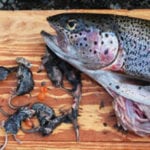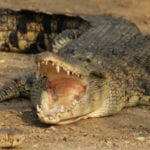 Weird Stuff
Weird Stuff  Weird Stuff
Weird Stuff  Miscellaneous
Miscellaneous 10 of the Craziest Landlord-Tenant Disputes
 Weird Stuff
Weird Stuff Ten Surreal Stories of Things Falling from the Sky
 Movies and TV
Movies and TV 10 Movie-Making Experiences That Made Cast & Crew Plant-Based
 Space
Space 10 “City‑Killer” Asteroids That Scientists Are Actively Tracking
 Music
Music 10 Popular Songs That Are Often Misunderstood
 Humans
Humans The 10 Most Pivotal Moments in Biology
 Weird Stuff
Weird Stuff 10 Unusual and Funny Constitutional Provisions You May Not Know
 History
History 10 Hilariously Strange Slang Terms Popular in the Old West
 Pop Culture
Pop Culture 10 Fictional Universes That Reset the Canon
 Weird Stuff
Weird Stuff 10 Ridiculously Complicated Ways People Used to Tell Time
 Miscellaneous
Miscellaneous 10 of the Craziest Landlord-Tenant Disputes
 Weird Stuff
Weird Stuff Ten Surreal Stories of Things Falling from the Sky
Who's Behind Listverse?

Jamie Frater
Head Editor
Jamie founded Listverse due to an insatiable desire to share fascinating, obscure, and bizarre facts. He has been a guest speaker on numerous national radio and television stations and is a five time published author.
More About Us Movies and TV
Movies and TV 10 Movie-Making Experiences That Made Cast & Crew Plant-Based
 Space
Space 10 “City‑Killer” Asteroids That Scientists Are Actively Tracking
 Music
Music 10 Popular Songs That Are Often Misunderstood
 Humans
Humans The 10 Most Pivotal Moments in Biology
 Weird Stuff
Weird Stuff 10 Unusual and Funny Constitutional Provisions You May Not Know
 History
History 10 Hilariously Strange Slang Terms Popular in the Old West
 Pop Culture
Pop Culture 10 Fictional Universes That Reset the Canon
Top 10 Fratricidal Baby Animals
Life in the wild can be so brutal, that sometimes animals are forced to do terrible things to ensure survival. Cannibalism and infanticide are well known in many species, but perhaps the most disturbing cases are those of baby animals killing their siblings, sometimes moments after they are born! This is a list of ten species that start their lives as ruthless fratricides.

Like most large birds of prey, Golden Eagles breed rarely, and usually lay only two eggs per nest. Often, one of the eggs hatches with a few days of advantage, and the firstborn chick starts being fed before its sibling is even born. Due to this, the firstborn grows bigger and stronger than the younger chick, and usually wins most squabbles for food. If food is very scarce, the younger chick can eventually become weak and is likely to die because of malnutrition.
But that’s not all; if food is extremely scarce, the ever-hungry firstborn will actively kill and devour its younger sibling in the nest, without its parents doing anything to prevent the fratricide.
This provides a valuable meal for the stronger chick, as well as reducing the workload for the adult eagles (it is always easier to feed one single chick than two). Scientists believe that up to 80% of all second born Golden Eagle chicks die like this. Fratricide has been reported in other kinds of raptors, such as the Bald Eagle, but it doesn’t seem to be as frequent as in Golden Eagles.
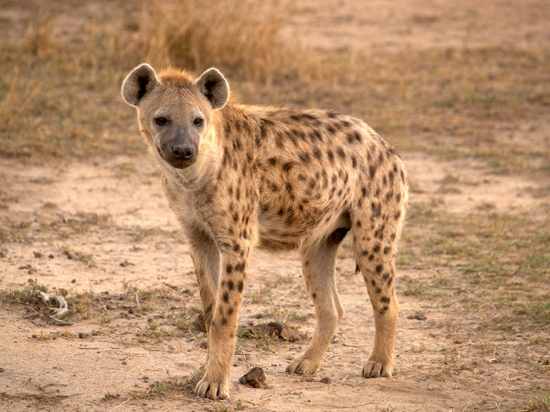
Most large predatory mammals, such as big cats, are born with eyes closed and toothless; in other words, completely harmless. However, that’s not the case with African spotted hyenas. They are born with eyes open, alert and armed with sharp teeth, and start fighting each other at a surprisingly early age to establish their dominance; the larger cubs bite their weaker siblings brutally, and although adult hyenas may try to separate them, as soon as the babies are left alone in the communal burrows, they continue with their fighting; battles between hyena cubs can last for weeks.
Baby hyenas have even been known to dig smaller tunnels inside the burrow, and fight inside these tunnels, where their mother couldn’t possibly reach them.
In some cases, the weaker cubs die because of their injuries, but usually their fate is even worst; after being bullied so ruthlessly by the stronger cubs, they become so shy that they won’t even dare leave the burrow when their mother comes home to feed them. Eventually, they die of starvation inside the burrow.
Besides being a strategy for the stronger cubs (the future leaders of the hyena clan) to eliminate potential competitors, fratricide is also a natural way to regulate the population. Indeed, hyenas are the most abundant large predators in Africa, and other than lions, which kill some of them occasionally, they have no natural enemies at all.
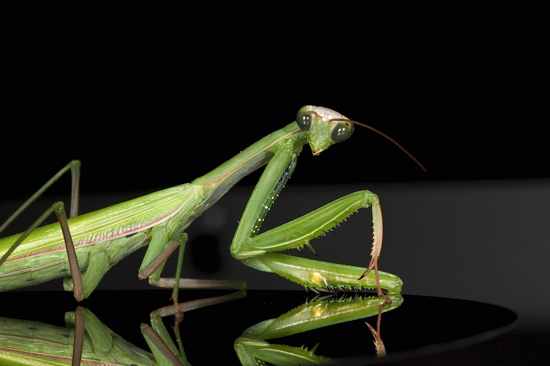
These predatory insects are famous because of their nightmarish sexual habits; the female often eats the male after sex, or even during sex, usually starting by biting off the unfortunate lover’s head. But these cannibalistic tendencies are not just an adult thing. Usually, a female mantis lays its eggs in a special egg case, and attaches it to a stem, leaf or branch. All 100 to 200 baby mantises hatch at the same time, and often their first meal is one of their siblings. This is more common when other small insects are scarce around the area where the baby mantises where born.
These insects are not the only fratricide invertebrates; baby spiders and scorpions have also been known to eat each other on occasion, and in the case of spiders, even the mother may join her babies for a same species snack, particularly if, as is often the case, she has fasted while guarding her eggs.

Snowy egrets are noted for their beautiful, elegant appearance and flight, and they are seldom thought of as brutal animals. However, they are actually among the most prone to fratricide. Usually, female snowy egrets lay three eggs. However, there is a difference between the two first eggs and the third one; the first egg usually gets a high dose of hormones during development inside the mother’s body, and the same happens with the second egg. However, the third egg only gets half the dose of hormones, which leads to less aggressive behavior.
When food is scarce, the two older egret chicks often harass their younger sibling, which, being more passive, usually can’t defend itself and is eventually killed, either stabbed by the sharp bills of its siblings, or thrown out of the nest. This means more food for the murderous chicks.
It may seem strange that Snowy Egrets lay three eggs if only two chicks are to survive, but there is an explanation for this; if something happened to the two first eggs, or to the first born chicks during the first days, the third chick would serve as a replacement. As cruel as it may sound, the third Snowy Egret chick is just a spare.
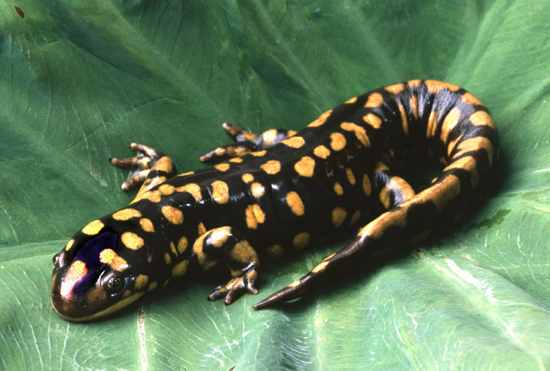
As do most amphibians, Tiger Salamanders start their lives as aquatic larvae or “tadpoles”. But they are unusual because their eggs can develop into two different kinds of tadpole. These are the so called “normal morph” and the “cannibal morph”. The cannibal morph has a larger head, bigger mouth and more developed teeth, and is larger than its normal siblings; usually, the cannibal morph appears only when the pond where the eggs were laid starts to dry up, or when food is scarce. They eat smaller tadpoles and develop more quickly as a result, metamorphosing earlier into adults. This clever, if brutal survival strategy allows Tiger Salamanders to successfully breed even when the circumstances are not the most idoneous.
The most amazing thing about these cannibalistic tiger salamanders is that they seem to recognize their siblings and will usually avoid killing them; instead, they go after unrelated tadpoles born in the same pond. They can even recognize their first cousins and avoid eating them as well! But if food is too scarce, they don’t mind gulping a few brothers or sisters, hence their inclusion in this list.

Common Cuckoos are easily the most famous fratricides in the Animal Kingdom. However, they are special because they usually don’t kill their actual siblings, but rather their foster siblings. Adult female Cuckoos look a lot like Sparrowhawks (small but ferocious raptors that hunt smaller birds), which comes in handy to scare other birds away from their nest. While the nest is abandoned, the female Cuckoo quickly eats one of the eggs and replaces it with one of her own, then she flies away.
When the nest owners return, they don’t notice anything different and continue to care for their brood. But the baby Cuckoo will usually be born before the nest owner’s chicks do, and (still blind and featherless) it will immediately start pushing all other eggs or chicks out of the nest and into their death; this murderous behavior is seemingly not conscious, but rather caused by the Cuckoo’s sensitive skin which can’t bare contact with other objects in the nest.
If there are two Cuckoo chicks in one same nest, eventually one of them eliminates the other, but this is very rare.
Eventually, the foster parents, which can’t do anything to prevent the “crime”, have no choice but to start feeding the only remaining chick in the nest… the Cuckoo. It seems that the baby Cuckoo’s begging calls mimic those of a nest full of chicks of whatever species the host parents are; this makes the adult birds behave as if they were actually feeding many of their actual chicks, bringing plenty of food to feed the impostor, which soon grows to a monstrous size compared to its foster parents. And they keep feeding the Cuckoo until its ready to leave, and, if it’s a female, mate and continue the cycle.
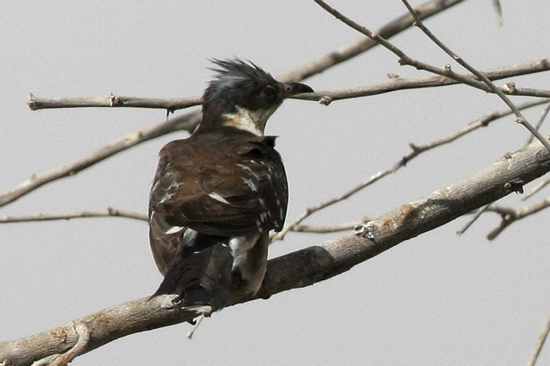
If you think the Common Cuckoo is bad, wait until you meet its slightly larger cousin, the Great Spotted Cuckoo, found in parts of Europe and Asia. The female Great Spotted Cuckoo often lays her egg (usually one but sometimes two) into a magpie’s nest. The baby Spotted Cuckoos don’t have the impulse to throw the other eggs and chicks out of the nest, but they usually develop faster than their unfortunate foster siblings, and they have huge, brightly colored gaping mouths which seem to be irresistible to the adult magpies. The result is that the magpies feed them more frequently than their own chicks. Eventually, the fast-growing Spotted Cuckoos leave the nest, but still demand to be fed by the magpies. This spells doom for the magpie chicks, which often die of starvation, abandoned in their own nest.
Why do magpies accept the Great Spotted Cuckoo’s eggs instead of just throwing them away? Scientists have discovered, much to their surprise, that adult Great Spotted Cuckoos will ruthlessly destroy all eggs or chicks of any magpie nest where the parents have thrown the Cuckoo egg away. In other words, it’s a Mafia-like system; the unfortunate magpies have no choice but to raise the Cuckoo chicks as their own if they don’t want all of their offspring to die. Although cruel, this is Nature’s way of controlling the magpie population, since magpies themselves often raid the nests of other birds and if they become too numerous, can cause great damage to other species.
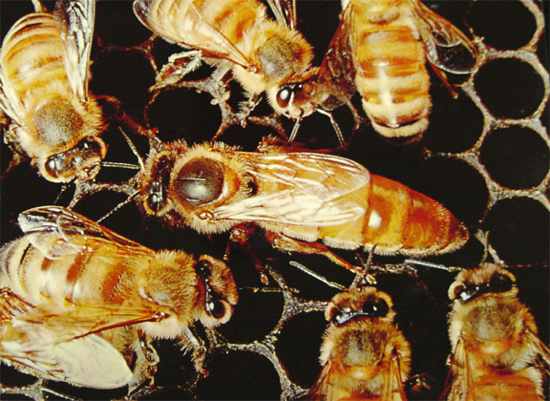
As everyone knows, Honey Bees live in colonies composed of one Queen, a few Drones (male bees whose only function is to fertilize the Queen), and Workers, which are sterile females and do basically all the hard work in the colony, from finding food, to producing honey, wax and a special substance called Royal Jelly which is produced by a special gland in the Worker’s head.
Royal Jelly is a highly nutritious food and is fed to the Queen and to all developing larvae in the colony. However, when the Queen starts growing old and its reproductive power diminishes, the Workers select a few larvae, take them to special cells away from the others and start feeding them with huge amounts of Royal Jelly. This causes them to develop into fertile Queen Bees. Once they reach a certain age, the future Queen Bees pupate (they build themselves a cocoon and undergo a metamorphosis into an adult bee).
However, there can only be one Queen in the colony, so the first Queen Bee to be born immediately finds the other Queens and stings them to death before they emerge. If two or more Queens emerge at the same time, there will be a vicious battle between them until one has killed all others. When this happens, the Worker bees will kill the old, original Queen and the new, young one will take its place. Life is not so sweet for a bee after all, is it? All bees in a colony are born from the same Queen and therefore siblings; that’s why they occupy #3 in this list.
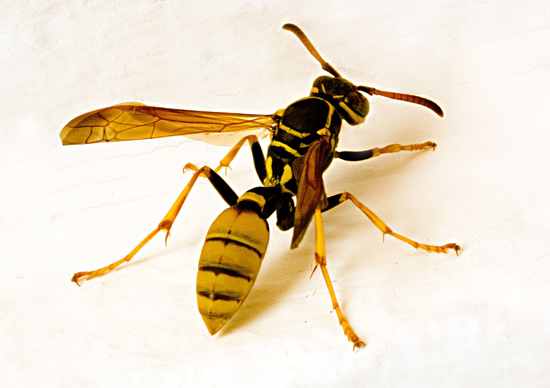
Copidomopsis floridanum is a parasitoid wasp, one of the most extreme examples of fratricide in the world. The adult wasp first finds a caterpillar and stings it, causing it to become completely paralyzed. Then, it injects two eggs into the caterpillar’s body; one of the eggs is male and one of the eggs female. But they don’t give rise to one brother and one sister. Instead, the eggs quickly “clone” themselves, in a process known as polyembryony, and soon the caterpillar is the still living, but completely impotent nursery to 200 male larvae, and over 1,200 female larvae.
Out of these females, around fifty grow larger than their siblings, developing huge jaws but no sexual organs. It was once thought that these “monster larvae” were supposed to be the guardians of their smaller, fertile siblings, which would eat the eggs of any other wasp that could try to inject its brood into the already occupied caterpillar.
However, it is now known that this is not the case; they actually seek and devour as many of their brothers as they can find. The reason they do this is because the male larvae will actually fertilize their sisters while inside the caterpillar, and only one or two males are enough to fertilize all the females. Therefore, by eliminating the surplus of males, the cannibalistic larvae ensure that there will be more food (the unfortunate caterpillar’s body tissues) for their fertile sisters, boosting their chances of survival. This is the only function of the cannibalistic larvae, since they are sterile and will never reproduce themselves.
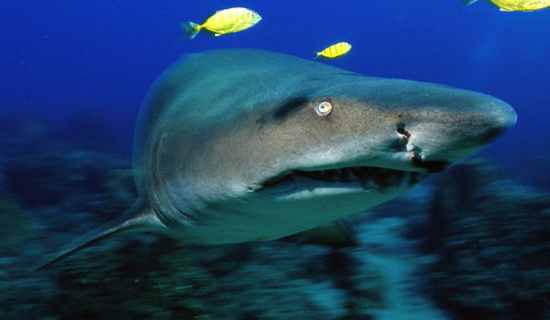
Known in Australia as Grey Nurse Sharks, these fierce-looking (if usually harmless to man) predators are #1 in this list with very good reason. Female Sand Tiger Sharks have two wombs, and each of them produces many eggs. The eggs hatch while still inside the womb, and the Sand Tiger embryos soon develop sharp teeth and start killing and eating their brothers and sisters and any unfertilized eggs in the womb, until there is only one embryo left alive in each womb.
As a result, the mother only gives birth to two pups (the last survivor of each womb), and since they fed abundantly in the womb, they are already quite big when they are born, around one meter long!
The Sand Tiger shark is therefore the only fratricide in this list that starts killing their siblings before being born; at the moment of its birth, it is already an experienced killer. This brutal survival strategy is known as intrauterine cannibalism, and was discovered in 1948 when a scientist, who was probing the womb of a Sand Tiger Shark, was bitten in one hand by one of the embryos! Although intrauterine cannibalism has been reported in other species of sharks, including the Great White Shark and even the Basking Shark (a placid, harmless plankton-eater as an adult), these feed only on unfertilized eggs while in the womb. The Sand Tiger Shark is the only shark known to cannibalize other embryos in the womb.
